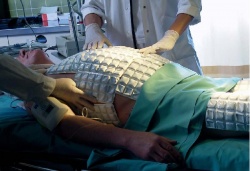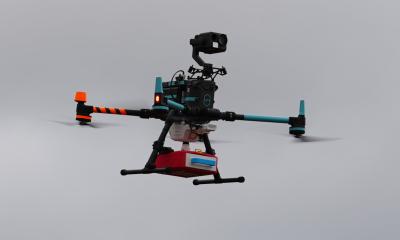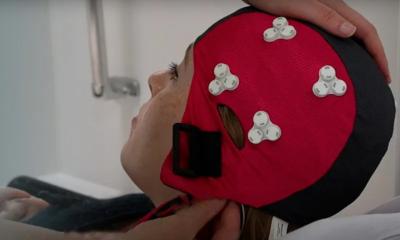Cold Times in Critical Care
Cold is not only a winter topic. Cold is also applied medicine: Moderate to deep hypothermia made cardiac surgery possible and mild therapeutic hypothermia improves survival after out-of-hospital cardiac arrest. By Holger Zorn


Jean-Dominique Larrey, Napoleon's lightning fast and skilful surgeon, inventor of the “flying ambulances”, had much to do in the Prussia-Poland campaign of the years 1806-07. It is reported that he could disarticulate legs from the hip joint in less than four minutes. But despite all his skill, some patients passed away easily, especially those who were able to get a place at the campfire. Freshly operated soldiers survived better if they had to sleep away from the fire in the snow, Larrey noted in a “Memorandum on the dry gangrene caused by cold”, and also that patients who underwent such an operation had as less pain the colder it was. Despite some anecdotal reports, that was the first systematic analysis of the effect of cold in medicine, published in Larrey’s Mémoires de médecine et de chirurgie militaire.
Ice Age in cardiac surgery
A hundred years later, William Gordon Bigelow was born in Brandon, Manitoba province, Canada - where winters may as hard as in East Prussia at Napoleon’s time. He became a physician as Larrey, and military surgeon too. After World War II he returned from Normandy to Toronto General Hospital and conducted pioneering research in hypothermia, hibernation, and cardiac pacemaker technology. Thinking of hypothermia as a means of anaesthesia, he laid the foundation for cardiac surgery. Today's patients are anesthetized with modern drugs and not placed in ice buckets to perform a surgical procedure, but only fifty years ago a cardiac OR looked like that.
The patient was cooled down to 16 °C before the surgeon took scalpel and saw, and opened the chest. A very archaic technique, don’t think about sterility… Very quickly, cooling blankets have been developed that were perfused by ice-cold water. However, surface hypothermia needs time, anaesthesia was still difficult – the gas men had only few tools –, and surgeons are impatient people. A competing concept, the extracorporeal circulation developed by the American surgeon John H. Gibbon, threatened to choke off the hypothermia but was difficult to handle too. Cooling the blood would be more efficient than cooling the skin, and combining both concepts, artificial circulation and hypothermia, was the key. The extracorporeal circuit was extended by a heat exchanger in stainless steel. Baxter-Bentley launched the first oxygenator with integrated heat exchanger on the market, cold water flowed through, supplied by a cooling device with ice tank, to cool and to rewarm the patients’ blood to extend the ischemic time tolerated by the human body, the brain cells.
Minor glacial in critical care
In 2000, physicians from Vienna University Hospital, central coordinating office of the Hypothermia After Cardiac Arrest Study Group (HACA), released a revealing study: 27 patients were cooled down to 33±1°C core temperature within 41-75 minutes after cardiac arrest by using head and body cooling masks and blankets. The target temperature was reached after 242-401 minutes and was maintained for an additional 24 hours. Thereafter, patients were passively rewarmed and reached a body temperature above 35°C after 7 hours. 6 months later, good neurological recovery was achieved by 14 patients (52%), 2 (7%) had poor neurological recovery, and 11 (41%) died - a 2-fold improvement in outcome, compared with a historical control group in Vienna [Source: Stroke 2000;31:86-94].
55% of all successful resuscitations lead to the death within the first 6 months if patients are not cooled. Two years later, the whole group – including also hospitals in Milano and Florence, Bruges and Brussels, Bonn and Helsinki – could publish the results of 137 cooled versus 138 conventionally treated patients: Seventy-five (55 %) of the patients in the hypothermia group had a favourable neurologic outcome, as compared with 54 (39 %) in the normothermia group. Mortality at six months was 41 per cent in the hypothermia group, as compared with 55 per cent in the normothermia group and with non-significant differences in complication rates between the groups [Source: NEJM 2002;346:549-56]. Dr. Michael Holtzer from Vienna, principal investigator, stated: “Treatment with hypothermia may be of value in terms of public health. Each year, cardiac arrest occurs in approximately 375,000 people in Europe, about 30,000 of whom would meet our inclusion criteria. We can be 95 per cent confident that treatment with hypothermia would prevent an unfavourable neurologic outcome in 1,200 to 7,500 of these patients.”
An Australian group with 77 patients and a slightly different approach (cooling was started prior to arrival at hospital but maintained for 12 hours) got similar results[NEJM 2002; 346:557-563]. Since that time, therapeutic mild hypothermia drew the attention of intensivists, was 2003 admitted to the guidelines of the International Liaison Committee on Resuscitation (ILCOR) and of the first hospitals (Heidelberg recommendation). Professor Bernd Böttiger, president of the European Resuscitations Council (ERC), calls cooling technology for each ambulance and any emergency room. “They data are evident, even if the underlying mechanism remains still unclear”, he says, and justifies: “If the blood circulation is interrupted only a few minutes, large quantities of free radicals are formed in the body. In resuscitated patients they initiate a chain reaction that leads to irreversible brain damage and thus amplify the damage caused by the lack of oxygen itself. Low temperatures seem to slow down both the free radical formation and thus triggered metabolic processes.”
“We safe the heart but we loose the brain”
This sentence, pointed out by the famous American surgeon Gerald Buckberg, was a hard reproach but unfortunately true. Driven by ILCOR, ERC and national councils, the technique of mild therapeutic hypothermia has been widely accepted and adapted - and has become more invasive. Our own program, started at Martin Luther University Hospital in Halle (Saale), Germany, in 2006, used an invasive cooling catheter, inserted into the femoral vein and advanced into the vena cava inferior. In 17 cases, 8 female and 9 male patients with an age of 37-84 years and with different causes of cardiac arrest, mild hypothermia was induced. The body temperature was lowered down to 33°C in the first two hours and was maintained at this level for about 20 hours. At the beginning, the lactate level is mostly raised, and its normalization at a normal value around 2 mmol/l is a good sign of metabolic recovery, thus a trigger to stop the perfusion. When the catheter removed, the body will be rewarmed passively in about 4-5 hours. We found this technique safe and effective. There are advantages especially for the cardiac instable patient.
At this time in Northern Germany, a consensus was agreed: Unconscious adult patients with spontaneous circulation after out-of-hospital cardiac arrest should be cooled already by the emergency team and brought only to hospitals that hold a cooling technique and may continue this therapy, because the clinical outcome could be dramatically improved – simply by cooling the patient, as soon as possible and for only 24 hours, under controlled clinical conditions and not on snow-covered East-Prussian battlefields.
10.03.2011










